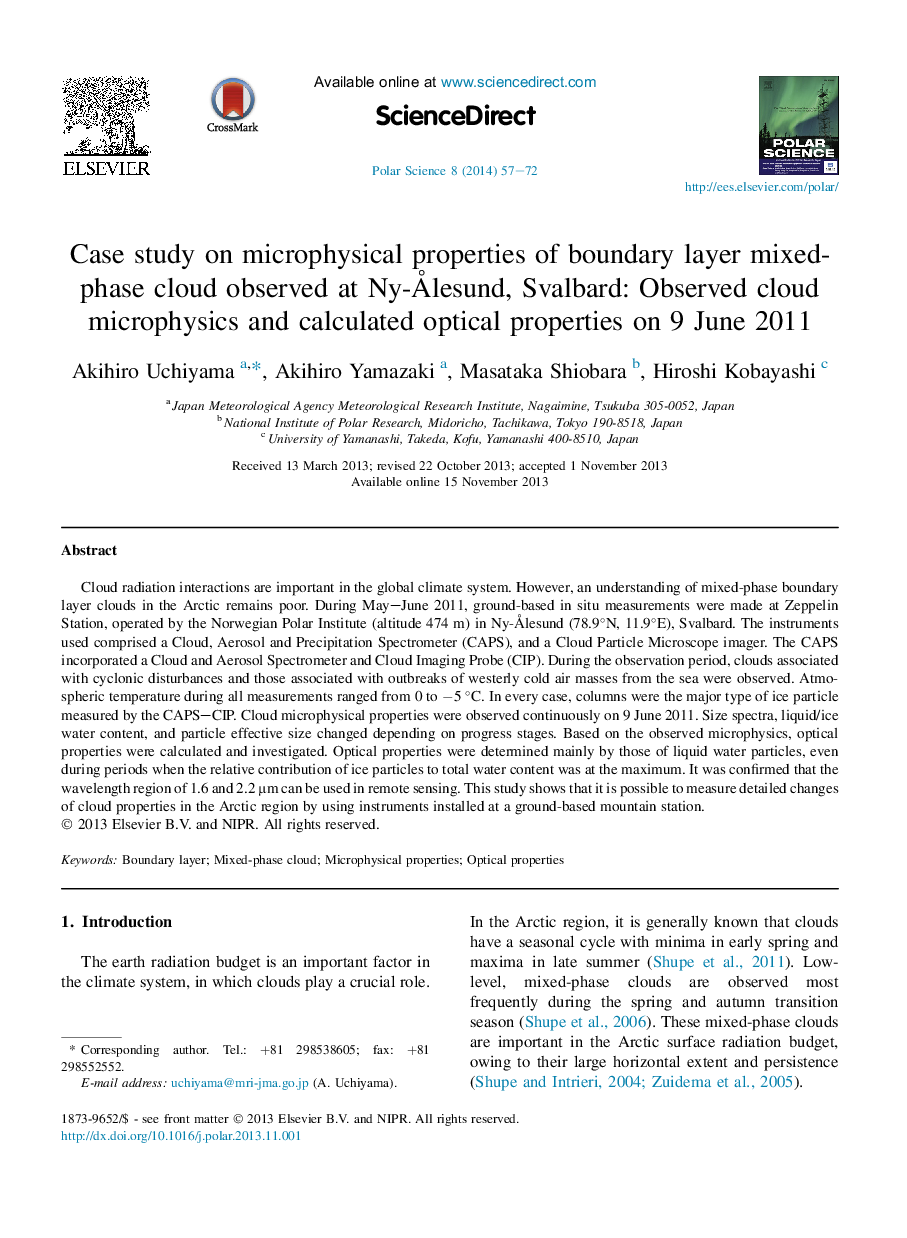| Article ID | Journal | Published Year | Pages | File Type |
|---|---|---|---|---|
| 4683198 | Polar Science | 2014 | 16 Pages |
Cloud radiation interactions are important in the global climate system. However, an understanding of mixed-phase boundary layer clouds in the Arctic remains poor. During May–June 2011, ground-based in situ measurements were made at Zeppelin Station, operated by the Norwegian Polar Institute (altitude 474 m) in Ny-Ålesund (78.9°N, 11.9°E), Svalbard. The instruments used comprised a Cloud, Aerosol and Precipitation Spectrometer (CAPS), and a Cloud Particle Microscope imager. The CAPS incorporated a Cloud and Aerosol Spectrometer and Cloud Imaging Probe (CIP). During the observation period, clouds associated with cyclonic disturbances and those associated with outbreaks of westerly cold air masses from the sea were observed. Atmospheric temperature during all measurements ranged from 0 to −5 °C. In every case, columns were the major type of ice particle measured by the CAPS–CIP. Cloud microphysical properties were observed continuously on 9 June 2011. Size spectra, liquid/ice water content, and particle effective size changed depending on progress stages. Based on the observed microphysics, optical properties were calculated and investigated. Optical properties were determined mainly by those of liquid water particles, even during periods when the relative contribution of ice particles to total water content was at the maximum. It was confirmed that the wavelength region of 1.6 and 2.2 μm can be used in remote sensing. This study shows that it is possible to measure detailed changes of cloud properties in the Arctic region by using instruments installed at a ground-based mountain station.
